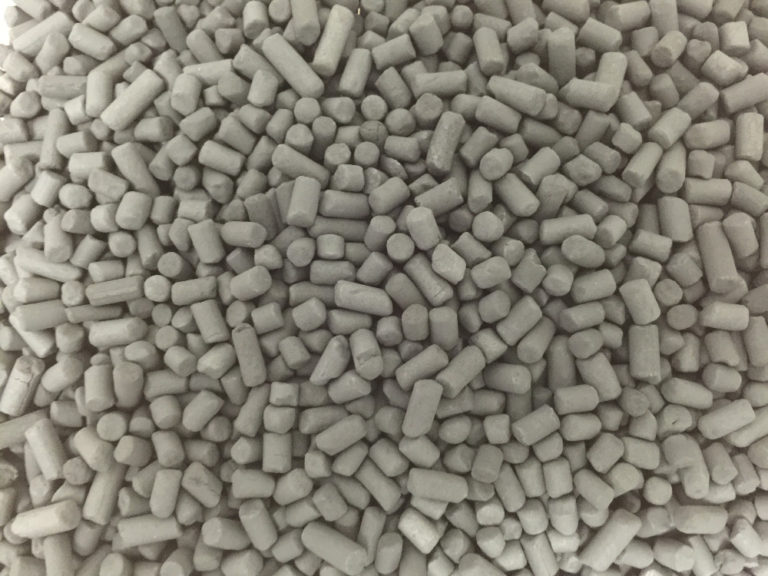
Hydrodesulfurization is also known as hydrotreating and is a chemical process which requires the presence of a catalyst. The market for global hydrodesulfurization catalysts is projected to be US$ 2.89 billion in 2022 and to increase at a CAGR of 5% to US$ 4.71 billion from 2022 to 2032. Hydrodesulfurization is a chemical process which is used to remove sulfur and sulfur compounds from refined petroleum end products, including petrol (gasoline), diesel, fuel oils and jet fuel.
In oil refineries and natural gas processing facilities, the hydrotreating process is made possible by the hydrodesulfurization catalyst. The hydrotreating procedure eliminates extra sulphur from the petroleum refining by-products using the Hydrodesulfurization Catalyst.
The Hydrodesulfurization Catalyst enables the hydrotreating process in petroleum refineries and natural gas processing plants. Using the Hydrodesulfurization Catalyst, the hydrotreating process removes excess sulfur from the petroleum refining by-products.
The process of hydrodesulfurization takes place usually in a fixed bed type of reactor in a refining unit, at temperatures which range from 300 °C to 400 °C. The hydrodesulfurization catalyst used for the process most commonly consists of a base that is impregnated with metals, such as molybdenum and cobalt. Many types of metals can perform the function of a Hydrodesulfurization Catalyst.
However, the metals which are most active as a Hydrodesulfurization Catalyst are those which occur in the middle of the transition metal series of the periodic table. For example, Ruthenium disulfide is one of the most active Hydrodesulfurization Catalysts available.
However, most of the hydrodesulfurization units in refining facilities use cobalt- and molybdenum disulfide-based Hydrodesulfurization Catalysts. Moreover, nickel- as well as tungsten-based Hydrodesulfurization Catalysts are also used, particularly in those hydrodesulfurization units which are requires to carry out the hydrodenitrification process.
Get an overview of market drivers and challenges affecting this industry: https://www.futuremarketinsights.com/reports/sample/rep-gb-8477
Metals and sulfides that act as Hydrodesulfurization Catalysts in a hydrotreating unit are typically based on support materials having greater surface areas. For example, alumina is a commonly used support for Hydrodesulfurization Catalyst.
Considering these aspects of the Hydrodesulfurization Catalyst, the study of the Hydrodesulfurization Catalyst market becomes an important read.
Hydrodesulfurization Catalyst Market: Dynamics
Hydrodesulfurization Catalyst is of critical importance in the catalysis dependent process of hydrodesulfurization. Hydrodesulfurization Catalyst helps carry out the process of hydrodesulfurization effectively, thus helping meet regulatory specifications and environmental norms applicable to the refined petroleum products.
The removal of sulfur enabled by the Hydrodesulfurization Catalyst also prevents poisoning of the catalysts used in refinery processes further down the line after hydrodesulfurization. The market for Hydrodesulfurization Catalyst will witness growing demand in direct proportion to the increasing need of hydrodesulfurization (HDS) process for the production of low sulfur petroleum fuel and other refined products, in view of existing and impending regulatory mandates.
Governments and regulatory bodies, such as the European Union and the International Maritime Organization (IMO), have laid down stringent low sulfur content regulations for petroleum fuels, especially those used in the marine industry.
The IMO sulfur content cap to be applicable from January 2020 onwards has accelerated the need for sulfur removal capacity in refineries, thereby creating new opportunities for the Hydrodesulfurization Catalyst market. Thus, the market for Hydrodesulfurization Catalyst will continue to be driven primarily by demand from the refinery industries.
Hydrodesulfurization Catalyst Market: Regional Outlook
The Hydrodesulfurization Catalyst market is projected to grow at a compounded annual growth high rate in the next few years, in line with growing investments for hydrosulfurization capacity expansion by refinery operators. Asia
Pacific is projected to be a significant market for Hydrodesulfurization Catalyst. The growing demand for refined petroleum products from the fast growing economies of the region will be a key driver of demand for Hydrodesulfurization Catalyst market in Asia Pacific.
Moreover, North America and Europe are key markets for Hydrodesulfurization Catalyst, with stringent regulatory requirements for sulfur dioxide emissions, which mandate the production of low sulfur content fuels. Growing natural gas processing capacity in these developed markets will also help increase demand for Hydrodesulfurization Catalyst. China, India, the U.S., Germany, Japan, U.K. are some of the key countries in the Hydrodesulfurization Catalyst market.
Customize Your Report: Tailor the Exclusive Insights to Your Hydrodesulfurization Catalyst Market Strategy! https://www.futuremarketinsights.com/customization-available/rep-gb-8477
Hydrodesulfurization Catalyst Market: Market Participants
Examples of some of the market participants identified across the value chain of the Hydrodesulfurization Catalyst market are:
- Honeywell UOP
- CRI Catalyst Leuna GmbH
- Criterion Catalysts & Technologies L.P.
- Haldor Topsoe A/S
- Honeywell UOP
- W.R. Grace and Company
- Albemarle Corporation
- Johnson Matthey PLC
- Axens S.A
- Redkino Catalyst Company
The research report presents a comprehensive assessment of the Hydrodesulfurization Catalyst market and contains thoughtful insights, facts, historical data and statistically supported and industry-validated market data.
It also contains projections using a suitable set of assumptions and methodologies. The research report provides analysis and information according to Hydrodesulfurization Catalyst market segments such as geographies, application and industry.
The Hydrodesulfurization Catalyst market report is a compilation of first-hand information, qualitative and quantitative assessment by industry analysts, inputs from industry experts and industry participants across the value chain.
Key Segments Profiled in the Hydrodesulfurization Catalyst Industry Survey
By Type:
- Cobalt-Molybdenum
- Nickel-Based
- Other
By Feedstock:
- Natural Gas-based
- Naphtha-based
- Heavy Oil-based
- Diesel Oil-based
- Kerosene-based
By End Use Industry:
- Petrochemicals
- Natural Gas Processing
By Region:
- North America
- Latin America
- Europe
- Asia Pacific
- Middle East and Africa
About Future Market Insights (FMI)
Future Market Insights, Inc. (ESOMAR certified, recipient of the Stevie Award, and a member of the Greater New York Chamber of Commerce) offers profound insights into the driving factors that are boosting demand in the market. FMI stands as the leading global provider of market intelligence, advisory services, consulting, and events for the Packaging, Food and Beverage, Consumer Technology, Healthcare, Industrial, and Chemicals markets. With a vast team of over 5,000 analysts worldwide, FMI provides global, regional, and local expertise on diverse domains and industry trends across more than 110 countries.
Contact Us:
Nandini Singh Sawlani
Future Market Insights Inc.
Christiana Corporate, 200 Continental Drive,
Suite 401, Newark, Delaware – 19713, USA
T: +1-845-579-5705
For Sales Enquiries: sales@futuremarketinsights.com
Website: https://www.futuremarketinsights.com
LinkedIn| Twitter| Blogs | YouTube




